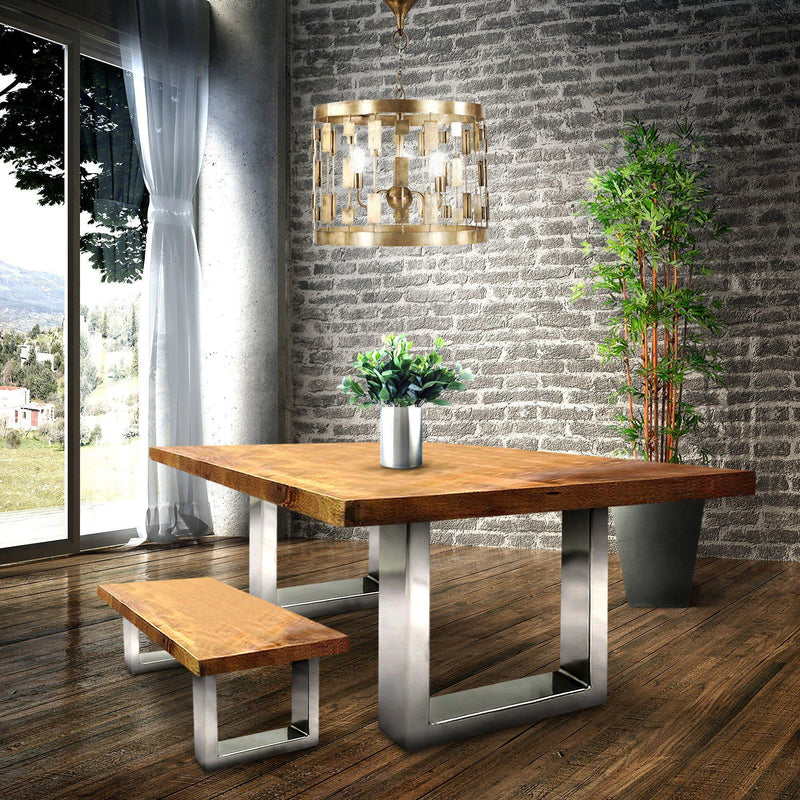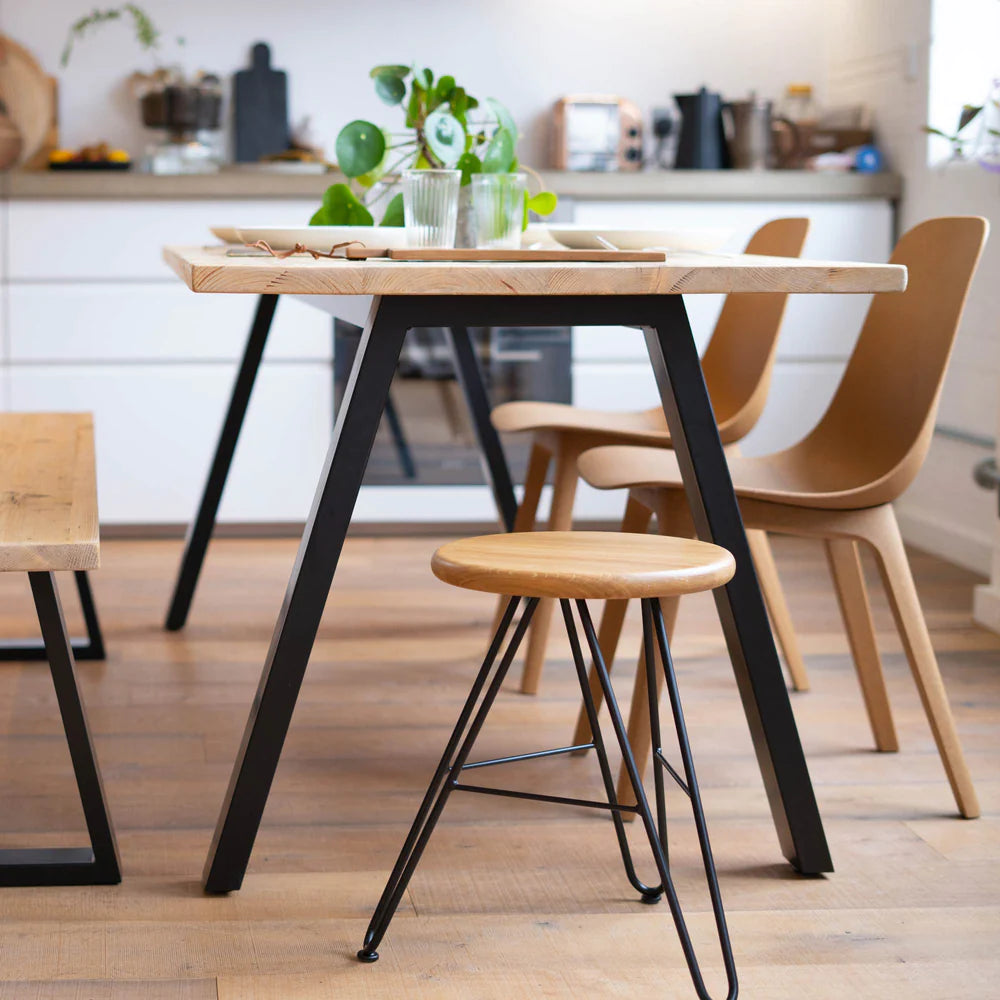Enhance Your Dining Room with Unique and Modern Dining Room Table Legs
Enhance Your Dining Room with Unique and Modern Dining Room Table Legs
Blog Article
From Typical to Modern: Discover the Perfect Eating Area Table Legs for Your Style
The selection of eating room table legs plays an essential role in defining the overall character of your space, bridging the void in between traditional workmanship and modern-day visual appeals. While classic layouts such as cabriole and turned legs evoke a feeling of ageless class, modern designs like barrette and geometric alternatives offer a possibility for striking visual interest. Examining the best balance between these designs needs a nuanced understanding of your existing décor and individual preference. As you think about these aspects, the inquiry remains: exactly how can you seamlessly incorporate these varied leg styles to produce an unified eating experience?
Recognizing Table Leg Styles
The variety of dining-room table leg styles can substantially affect both the aesthetics and performance of the area. Each leg design adds unique practical features and visual aspects, satisfying varied style preferences and use demands. Comprehending these styles is essential for choosing the best table that aligns with your overall interior style vision.
For circumstances, tapered legs provide a clean, traditional look that can enhance a room's elegance, while pedestal bases provide security and maximize legroom, making them excellent for smaller rooms. Barrette legs, a characteristic of mid-century modern-day design, introduce an industrial flair, enabling a ventilated, open feeling. Similarly, trestle legs stimulate rustic appeal, providing robust support and a feeling of eternity.
Additionally, the option of products plays a significant role. Wood legs can bring warmth and structure, whereas metal alternatives usually communicate a sleek, modern ambiance. Eventually, understanding table leg designs is crucial for developing a natural dining location that shows personal design while making certain practicality and comfort. By attentively considering these components, you can enhance both the visual and practical allure of your eating room.
Traditional Table Leg Options
When choosing dining room table legs, typical alternatives usually symbolize classic beauty and craftsmanship. These layouts reflect an abundant heritage and a dedication to quality, making them perfect for those who value traditional aesthetic appeals.
One of the most renowned typical leg styles is the cabriole leg, characterized by its stylish rounded form. This design often includes decorative makings and is most commonly located in Queen Anne and Chippendale furnishings. One more prominent choice is the transformed leg, which flaunts a series of smooth, rounded forms that provide a timeless appearance while preserving stability.
Moreover, the straight leg, while straightforward, provides a strong and unadorned structure that can mix seamlessly with a range of tabletop designs. For those drawn to ornate outlining, claw-and-ball feet legs stimulate a feeling of majesty and can function as a stunning focal factor in any dining area.
Finally, stand bases, although not purely legs, supply a different standard choice that permits adequate legroom and can be wonderfully sculpted. Each of these typical leg styles contributes to the overall setting of a dining-room, marrying feature with aesthetic allure.

Modern Table Leg Layouts
Modern table leg designs supply a varied range of styles that highlight innovative materials and tidy lines. These designs often focus on functionality while working as striking focal factors within a dining space. Minimal appearances prevail, with legs crafted from products such as steel, glass, and crafted wood, which contribute to a contemporary and airy feel.
One popular style is the hairpin leg, defined by its slim, tapered framework that supplies stability without frustrating the table top (dining room table legs). This style is frequently discovered in mid-century modern-day furnishings and can easily match numerous dining table shapes. An additional pattern is making use of geometric shapes, where legs may take on angular or unbalanced types, adding visual rate of interest and a touch of virtuosity

Mixing Styles for Distinct Spaces
Typically, property owners look for to develop distinct dining spaces that mirror their individual style by mixing numerous style components. This strategy permits the unification of varied aesthetics, leading to an unified yet distinctive setting. For example, pairing a rustic wooden table with smooth, contemporary metal legs can develop a captivating contrast that elevates the area's total appeal.
Furthermore, integrating vintage table legs with contemporary tabletops can stimulate a sense of history while preserving a modern sensibility. Such combinations not only showcase private preference however additionally motivate creative thinking, permitting house owners to curate a space that really feels both individual and inviting.
Color plays a crucial role in this blending process; selecting table legs that match or comparison with the existing color Check Out Your URL design can enhance aesthetic interest. For instance, whitewashed legs can soften the boldness of a dark table surface area, developing a balanced visual.
Tips for Selecting the Right Legs
Selecting the right table legs is crucial for attaining both capability and aesthetic appeal in your dining space. Begin by thinking about the overall design of your area. Typical setups gain from legs that feature intricate carvings or turned layouts, while modern rooms might call for smooth, minimalist styles.
Following, evaluate the elevation and stability of the legs. dining room table legs. Conventional table vary in between 28 to 30 inches in height, so make sure the legs match this measurement for comfort. Furthermore, durable products, such as hardwood or steel, can enhance stability and long life
Evaluate the leg shape also-- alternatives consist of right, tapered, or hop over to here pedestal layouts. Straight legs provide a classic appearance, while conical legs can include a touch of elegance. Pedestal bases provide enough legroom and are excellent for smaller areas.
Verdict
In summary, choosing the ideal dining-room table legs needs cautious consideration of both conventional and modern-day designs. Standard options such as cabriole and transformed legs supply classic style, while contemporary designs like barrette and geometric shapes give a modern touch. By integrating leg style, height, and product with the total decor, a natural and welcoming atmosphere can be achieved. Eventually, the picked table legs ought to reflect the desired visual, boosting the eating experience within the area.
The selection of dining area table leg designs can substantially affect both the visual appeals and functionality of the area. Ultimately, understanding table leg designs is vital for creating a cohesive eating location that shows personal i thought about this design while guaranteeing usefulness and comfort.One of the most renowned traditional leg designs is the cabriole leg, characterized by its stylish bent shape. Straight legs offer a classic look, while conical legs can add a touch of style.In summary, picking the perfect dining space table legs requires mindful factor to consider of both contemporary and conventional styles.
Report this page